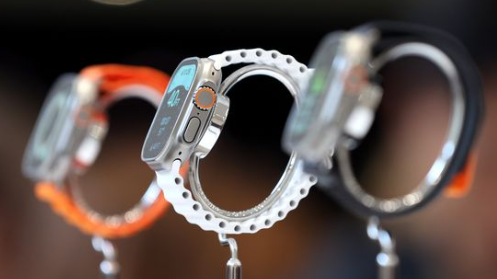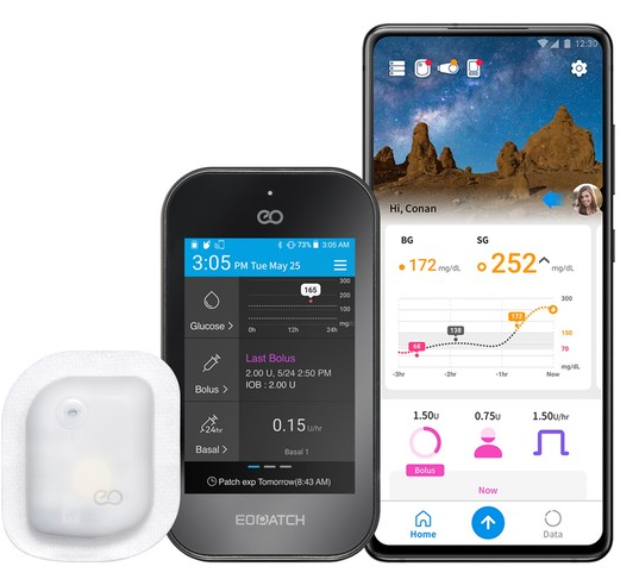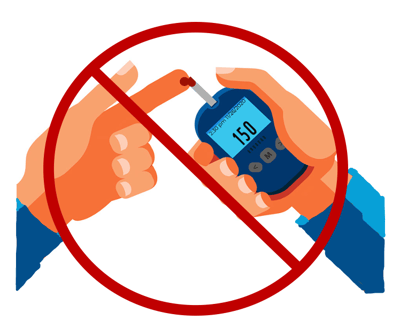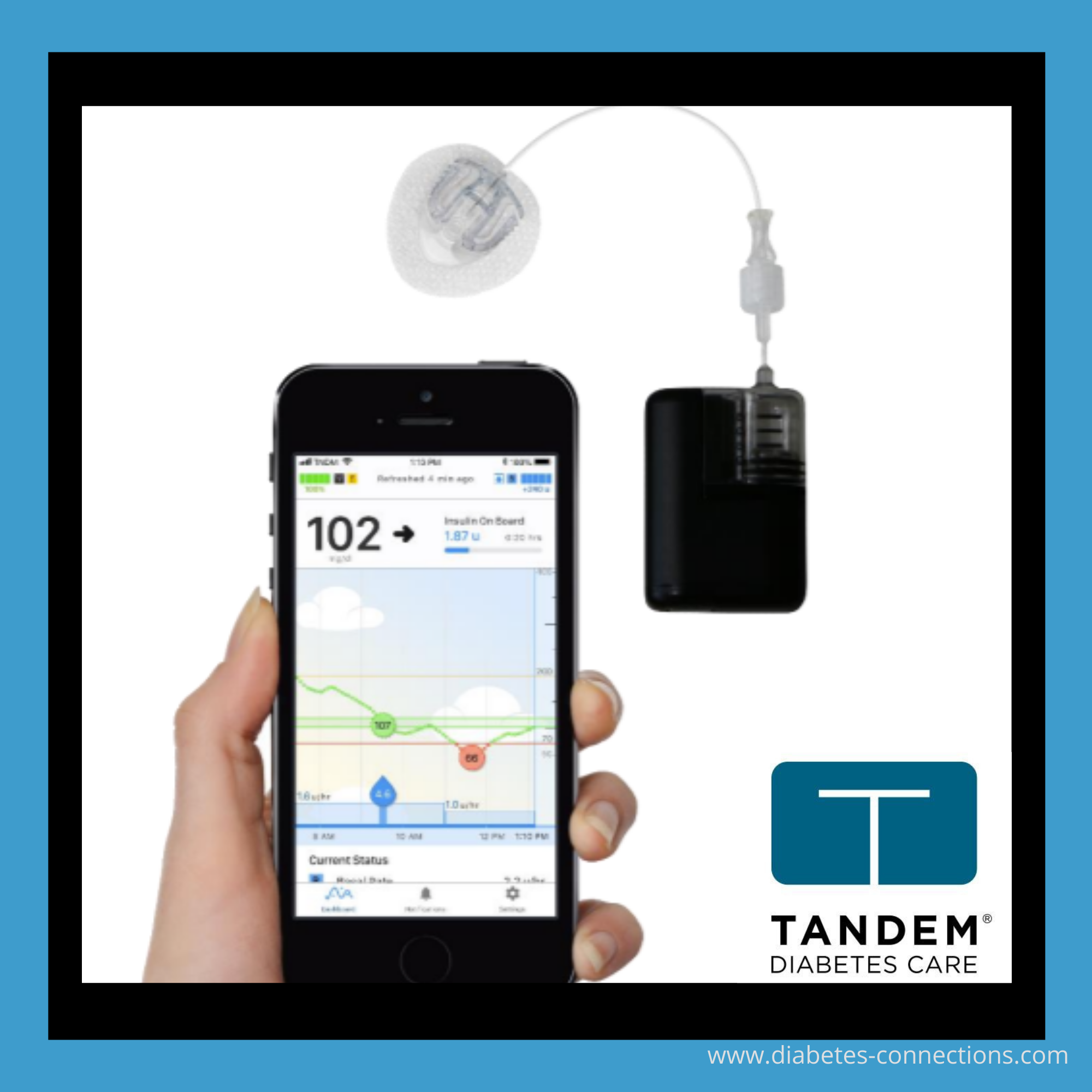Apple makes strides in watch-based blood glucose tracking by Elise Reuter for MedTechDive.com, 22 February 2023.
 Apple has developed a proof-of-concept device for needle-free blood glucose monitoring. Apple’s device would use light to measure glucose levels in interstitial fluid, just below the skin. Engineers are developing a prototype device about the size of an iPhone that can be strapped to the bicep, but it would ultimately need to be shrunk down, with the goal of incorporating it into the Apple Watch.
Apple has developed a proof-of-concept device for needle-free blood glucose monitoring. Apple’s device would use light to measure glucose levels in interstitial fluid, just below the skin. Engineers are developing a prototype device about the size of an iPhone that can be strapped to the bicep, but it would ultimately need to be shrunk down, with the goal of incorporating it into the Apple Watch.
The company had worked with Rockley Photonics Holdings to develop the chips and sensors for the device, but Rockley went bankrupt last month. Apple has shifted to Taiwan Semiconductor Manufacturing Co. to make the main chip for the device.
Apple envisions the technology being used to warn people if they’re prediabetic, with the goal of helping them avoid developing Type 2 diabetes. That sets it apart from continuous glucose monitors currently on the market that are primarily used by people who have Type 1 diabetes, though coverage of the devices for Type 2 diabetes could expand this year.
Read more: Apple makes strides in watch-based blood glucose tracking
Medtronic aims to acquire Korean wearable insulin pump maker EOFlow by Lee Han-soo for Korea Biomedical Review, 22 February 2022.
 Medtronic, a U.S. medical device company, is reportedly seeking to acquire EOflow, a Korean company specializing in wearable insulin pumps. EOFlow just filed for clearance from the US FDA.
Medtronic, a U.S. medical device company, is reportedly seeking to acquire EOflow, a Korean company specializing in wearable insulin pumps. EOFlow just filed for clearance from the US FDA.
“Rumor is circulating that Medtronic has entered the due diligence stage,” an investment banking official was quoted by Aju Business Daily as saying. “The due diligence process entails costs and proves that Medtronic is reviewing the acquisition of EOFlow.”
Although the exact details of the transaction are not known due to the nature of the private transaction, industry watchers speculate that Medtronic will seek to acquire shares EOFlow CEO Kim Jae-jin, who is the largest shareholder of EOFlow. Kim holds an 18.58 percent stake in the company. Industry watchers speculate that a third-party allocation paid-in capital increase to acquire the new shares is also a possibility. EOFlow was unavailable for comments.
My thoughts? That just takes one more insulin pump off the market for interoperable, interchangeable pump/CGM/closed-loop app systems. What does that mean? LESS CHOICE for those of us who would like to pick the features and systems that work best for managing our own diabetes. Let’s hope the FTC does not allow this. Looks like EOFlow has partnered with Diabeloop (based in France) to deliver an automated insulin delivery system in Europe.
Read more: Medtronic aims to acquire Korean wearable insulin pump maker EOFlow
 The 16th International Conference on Advanced Technologies & Treatments for Diabetes (ATTD 2023), the leading conference on developments in diabetes treatments and technology, convened last week in Berlin, Germany. Over 3900 international participants, experts, community advocates and industry leaders gathered to discuss the latest updates in the field. #dedoc°, #ATTD2023
The 16th International Conference on Advanced Technologies & Treatments for Diabetes (ATTD 2023), the leading conference on developments in diabetes treatments and technology, convened last week in Berlin, Germany. Over 3900 international participants, experts, community advocates and industry leaders gathered to discuss the latest updates in the field. #dedoc°, #ATTD2023
Here are some highlights … but for more, check out: Previewing the ATTD 2023 Annual Conference
******************************************************************************
The Current State of Non-Invasive Glucose Monitoring by Andrew Briskin for diaTribe.org, 25 February 2023.
 At the ATTD 2023 annual conference, the session started with a discussion about using breath to measure glucose levels, as well as ketones and other important molecules. Bruno Thuillier, founder and chief technology officer of BOYDSense, explained the company’s work on improving the accuracy and convenience of breath-based analysis. BOYDSense’s prospective devices measure a group of compounds in the breath, called volatile organic compounds, or VOCs. VOCs are molecules that the body forms as byproducts from processes like using glucose for energy, breaking down fats, and many other processes that may be affected in someone with diabetes. By measuring the amount of some of these glucose byproducts, researchers hope to be able to consistently measure glucose levels in the body. the company’s device in development, called Lassie, hopes to deliver the technology in pocket-size. It is now being investigated in clinical trials in people with type 2 diabetes in France. #dedoc°, #ATTD2023
At the ATTD 2023 annual conference, the session started with a discussion about using breath to measure glucose levels, as well as ketones and other important molecules. Bruno Thuillier, founder and chief technology officer of BOYDSense, explained the company’s work on improving the accuracy and convenience of breath-based analysis. BOYDSense’s prospective devices measure a group of compounds in the breath, called volatile organic compounds, or VOCs. VOCs are molecules that the body forms as byproducts from processes like using glucose for energy, breaking down fats, and many other processes that may be affected in someone with diabetes. By measuring the amount of some of these glucose byproducts, researchers hope to be able to consistently measure glucose levels in the body. the company’s device in development, called Lassie, hopes to deliver the technology in pocket-size. It is now being investigated in clinical trials in people with type 2 diabetes in France. #dedoc°, #ATTD2023
One of the other techniques being studied for non-invasive glucose measurement is called Raman spectroscopy, which uses light to measure glucose simply by touching a button with your finger. The device, known as a touch glucose monitor (TGM), is in development by RSP systems. Dr. Anders Weber, CEO of RSP Systems, said that the technology is being investigated in clinical trials and has published data on its current accuracy, but is still at a relatively early stage.
Read more: The Current State of Non-Invasive Glucose Monitoring
******************************************************************************
What We Wish You Knew About Diabetes and Technology by Matthew Garza for diaTribe.org, 25 February 2023.
#dedoc° symposia “What we wish you knew — and why”
 At the ATTD 2023 conference, panelists during the #dedocº Symposium highlighted how access and personalization impact people with diabetes’ uptake and use of diabetes technology and why citizen science is so vital to solving these issues. Diabetes advocacy organization, #dedocº, known for its “we are not waiting” slogan, hosted a symposium that gave advocates the chance to share some of these barriers and challenges with healthcare professionals, researchers, and other people with diabetes.
At the ATTD 2023 conference, panelists during the #dedocº Symposium highlighted how access and personalization impact people with diabetes’ uptake and use of diabetes technology and why citizen science is so vital to solving these issues. Diabetes advocacy organization, #dedocº, known for its “we are not waiting” slogan, hosted a symposium that gave advocates the chance to share some of these barriers and challenges with healthcare professionals, researchers, and other people with diabetes.
Two of the largest challenges that people with diabetes face when using technology across the world include accessing that technology and being able to find technology that is personalized for them.
Dawn Adams, a PhD researcher living with T1D, at Ulster University in Northern Ireland, touched on the topic of personalization through the lens of citizen science or the involvement of the general public in scientific research. She shared her own experiences searching for information to help her use technology and manage her diabetes throughout her menstrual cycle, during pregnancy, and during menopause. “Check your glucose levels more regularly,” said Dawn, was the only advice she found.
There was simply no real information for people living with this condition and going through these life phases. And that was clear in how the technology operated as well – there are quite a few automated insulin delivery systems with a “sleep mode” and an “exercise mode” but not a single one has a “menstruation mode” or a “pregnancy algorithm.”
Adams explained this is why citizen science is so important – it opens up conversations and brings to light real-world challenges that people with diabetes face, encouraging scientists to prioritize research important to people with diabetes.
Adams’s talk highlighted the importance of the #dedocº symposium as a whole. When people with diabetes are given a seat at the table, it only strengthens the science that healthcare professionals, industry professionals, and researchers are working on. These advocates were able to bring to light how access and personalization impact their technology use and they challenged the audience to help find solutions. #dedoc°, #ATTD2023
Read more: What We Wish You Knew About Diabetes and Technology
******************************************************************************
Resolving Hypoglycemia: Learnings from the HypoResolve Project by Natalie Sainz for diaTribe.org, 25 February 2023.
 The state of hypoglycemia, when glucose value falls below 70 mg/dL, can be extremely dangerous to people with diabetes if they do not address it. If someone with diabetes does not treat low glucose levels, they can experience severe hypoglycemia, in which glucose levels are so low that mental or physical functioning is impaired and the person requires assistance. The three categories of hypoglycemia are:
The state of hypoglycemia, when glucose value falls below 70 mg/dL, can be extremely dangerous to people with diabetes if they do not address it. If someone with diabetes does not treat low glucose levels, they can experience severe hypoglycemia, in which glucose levels are so low that mental or physical functioning is impaired and the person requires assistance. The three categories of hypoglycemia are:
-
-
- Level 1: Hypoglycemia alert level when blood glucose level falls below 70 mg/dL
- Level 2: Serious/clinically important when blood glucose level falls below 54 mg/dL
- Level 3: Severe hypoglycemia is defined as impaired cognitive function requiring external assistance.
-
Data demonstrate the importance of hypoglycemia in management. “People with diabetes identify reducing hypoglycemic events as a meaningful improvement in their diabetes,” said Dr. Simon Helle. professor of clinical diabetes at the University of Sheffield Medical School.
Because of the amount of information needed to further understand and address hypoglycemia, projects like HypoResolve and HypoMETRICS explore the impact of hypoglycemia in people with diabetes. Dr. Pratik Choudhary, senior lecturer, and consultant in diabetes at King’s College of London said, “Hypoglycemia means different things to different people,” meaning that low episodes impact everyone in a different way. Additionally, he said, the HypoMETRICS study has so far demonstrated the difference between “patient-reported hypoglycemia” and “CGM-detected hypoglycemia.” #dedoc°, #ATTD2023
Read more: Resolving Hypoglycemia: Learnings from the HypoResolve Project
The understanding and treatment of hypoglycemia are so critical to all of us living with diabetes, particularly Type 1 diabetes!
In a quote David Panzirer, Trustee of The Leona M. and Harry B. Helmsley Charitable Trust: “Type 1 diabetes is the ONLY disease I know of where patients and caregivers are making dosing decisions for a drug that could kill you – and they are making these decisions 24/7/365.“
Many patients and caregivers do not know about glucagon, know how to use it, or even have glucagon on hand. Further, many endocrinologists do not make it a point to mention it or write prescriptions for T1Ds at any office visits!
Would you drive a car with a gas pedal and NO brake? Of course not! Then WHY USE INSULIN (your “gas pedal”) without access to GLUCAGON (your “brake”)???
 After 58 years of living with T1D, I needed glucagon (twice in 2 weeks) last year for the first time in my life. You don’t need it … UNTIL YOU DO NEED IT! Please consider getting your prescription for Gvoke (Hypopen or Kit/vial for micro-dosing), Zegalogue (Hypopen), or Baqsimi (nasal powerful spray, not to be self-administered)!
After 58 years of living with T1D, I needed glucagon (twice in 2 weeks) last year for the first time in my life. You don’t need it … UNTIL YOU DO NEED IT! Please consider getting your prescription for Gvoke (Hypopen or Kit/vial for micro-dosing), Zegalogue (Hypopen), or Baqsimi (nasal powerful spray, not to be self-administered)!
My group, Loop and Learn, hosted a great presentation by Gary Scheiner, author of Think Like a Pancreas, to discuss all hypoglycemia and treatments with glucose and glucagon. I think you’ll learn a lot … and feel free to share the link with other T1Ds, your T1D community, and your healthcare providers to share with their patients!
Tandem sees growth in new product launches after $95M loss on decline in pump placements by Elise Reuter for MedTechDive.com, 23 February 2023.
 Despite swinging to a loss of $94.6 million for the year, Tandem Diabetes Care said it expects growth in 2023, fueled by new product launches of its own and by makers of continuous glucose monitors. The company did not include any impact from new devices in its financial forecast for 2023.
Despite swinging to a loss of $94.6 million for the year, Tandem Diabetes Care said it expects growth in 2023, fueled by new product launches of its own and by makers of continuous glucose monitors. The company did not include any impact from new devices in its financial forecast for 2023.
The San Diego, Calif.-based maker of insulin pumps has been working on a smaller device, named Mobi, which users can control with a smartphone. “Clearance timing remains difficult to predict,” CEO John Sheridan said on a Wednesday investor call announcing fourth-quarter earnings, adding that the company is preparing for a scaled launch in the second half of 2023.
Separately, the company expects a boost from new continuous glucose monitors being introduced by Dexcom and Abbott Laboratories, which can connect with Tandems pumps. Tandem expects integration with G7 in the second quarter, while integration with Abbott’s Freestyle Libre 3 will depend on when Abbott receives approval for automated insulin delivery
Read more: Tandem sees growth in new product launches after $95M loss on decline


wow that is a lot.
I am not so upset my Medtronic acquiring EOFlow. I am a big fan of dialoop and hope to see it in the US ASAP. If MEDT buying EOFlow does that, I will be a supporter. Oh and yes I understand losing a pump actor will not be good, but I think dialoop approval in the US will be a game changer
I can function less than 70, depending on how fast i am dropping. I find 130 can be just as difficult if I am falling fast.
I heard Gary was fantastic.
tandem losing 95 million? That seems like a lot for a private company.